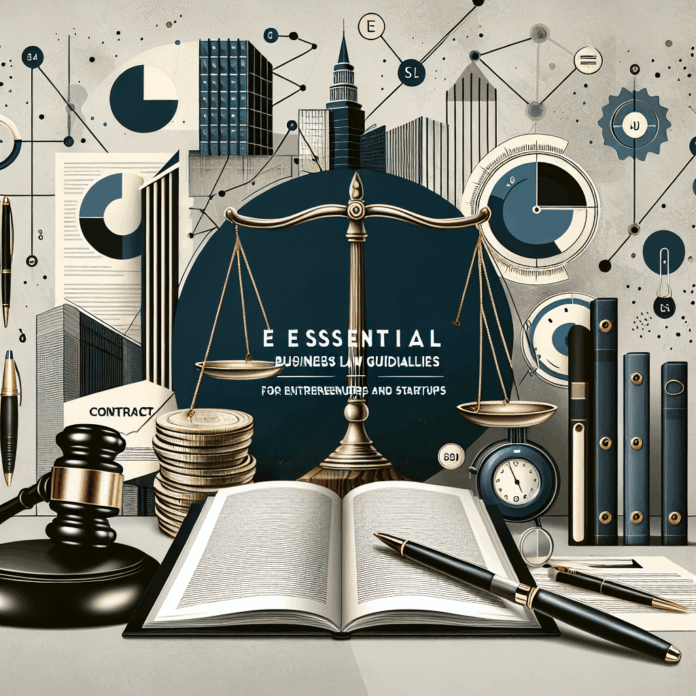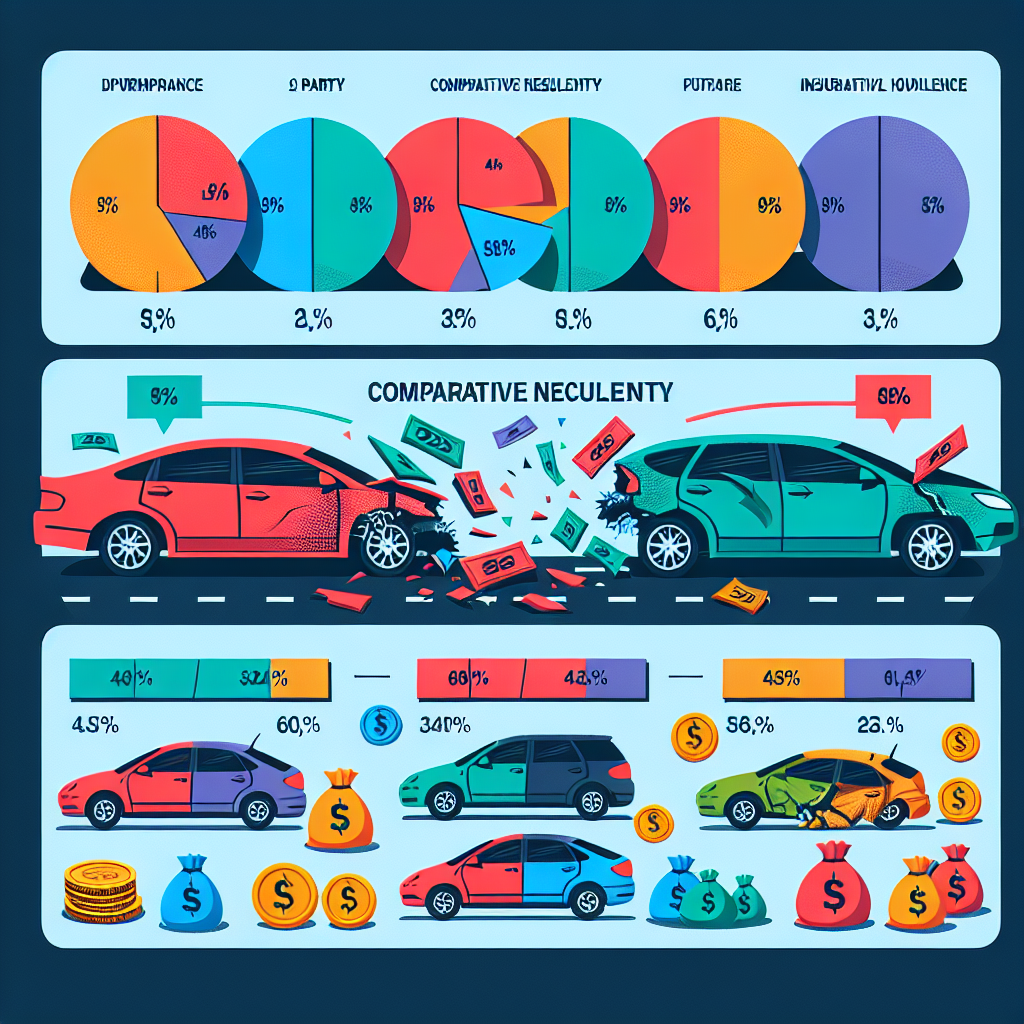Essential Business Law Guidelines for Entrepreneurs and Startups
Introduction
Welcome to the wild world of entrepreneurship! If you’re reading this, chances are you’re either dreaming up a startup or already knee-deep in your business venture. But before you dive headfirst into the entrepreneurial pool, let’s talk about something that might not be as exciting as your next product launch but is absolutely essential: business law.
Think of this article as your trusty business law guide, a roadmap to navigate the sometimes murky waters of corporate regulations and legal obligations. You wouldn’t go hiking without a map (or at least a good GPS), right? So why would you embark on your entrepreneurial journey without understanding the legal landscape?
This guide is packed with insights covering everything from corporate structures to employment law, and even those pesky intellectual property issues that can sneak up on you like an unexpected bill. Whether you’re looking for a corporate law guide, a commercial law guide, or even a full-fledged business regulations handbook, we’ve got you covered.
Did you know that nearly 60% of small businesses face legal issues? Having a solid understanding of business law can save you from costly mistakes and help steer your company towards success.
Throughout this article, we’ll explore the essentials every entrepreneur should know, including:
- Understanding Corporate Structures: Which type is right for you?
- Business Compliance: What regulations do you need to follow?
- Contracts and Agreements: How to protect yourself legally.
- Intellectual Property: Keeping your ideas safe from copycats.
- Employment Law: Navigating employee rights and responsibilities.
The goal here is not just to inform but to empower you with knowledge that will help mitigate risks and enhance compliance. Think of it as equipping yourself with armor before heading into battle because let’s face it, running a business can feel like an epic quest sometimes!

Buckle up and get ready; we’re about to embark on an enlightening journey through the essential guidelines that will keep your entrepreneurial dreams alive and thriving!
Understanding Business Law
Welcome to the wild world of business law, where rules and regulations are as varied as the flavors at your local ice cream shop! Understanding business law is crucial for every entrepreneur and startup, as it lays the foundation for how your business operates, grows, and navigates the complex legal landscape.
Definition and Importance of Business Law
At its core, business law encompasses a wide range of legal disciplines that govern commercial transactions and business operations. Think of it as the rulebook that helps you play the game of entrepreneurship without getting penalized for stepping out of bounds.
This includes everything from corporate law to employment law, intellectual property rights to tax regulations. Ignoring these laws can lead to costly mistakes, litigation, or even a shutdown. So, consider this your essential business law guide the ultimate playbook for avoiding legal fumbles!
Overview of Key Areas in Business Law
The realm of business law is vast, but here are some key areas every entrepreneur should be familiar with:
- Corporate Law: Governs how businesses are formed and operated.
- Commercial Law: Covers sales and transactions between businesses.
- Employment Law: Regulates employer-employee relationships.
- Intellectual Property Law: Protects creations like trademarks and patents.
- Tort Law: Deals with civil wrongs that cause harm or loss.
- Treasury Regulations: Guides tax compliance for businesses.
- Mergers & Acquisitions: Governs the buying/selling of companies.
If you’re not familiar with these areas, don’t worry! This blog post will guide you through them step-by-step. Just like assembling IKEA furniture one piece at a time!

A common misconception is that business laws only apply to large corporations. In reality, they are just as crucial for small businesses and startups. A single misstep could lead to hefty fines or disputes that could derail your entrepreneurial dreams. So buckle up; we’re diving deeper into each area in this guide!
Navigating Business Regulations
The maze of business regulations can be daunting. However, understanding these rules is akin to knowing the terrain before embarking on a road trip without it, you might end up lost or worse yet out of gas!
- Business Compliance Guide: Stay compliant with local, state, and federal laws.
- Regulatory Compliance Checklist: Ensure all necessary permits and licenses are in place before launching your startup.
- Contract Negotiation Tips: Learn how to draft agreements that protect your interests while fostering strong partnerships.
The bottom line? A solid grasp of business law not only keeps you out of hot water but also empowers you to make informed decisions that propel your startup forward. So let’s keep those legal ducks in a row!
Corporate Structures and Compliance
When it comes to launching your startup, understanding corporate structures is like picking the right vehicle for a road trip. Do you want a compact car for city driving or an SUV for off-road adventures? Similarly, choosing the right corporate structure can impact your business’s growth, liability, and tax obligations. Let’s break it down!
Understanding Corporate Structures
Your first decision is whether to go with a sole proprietorship, partnership, corporation, or limited liability company (LLC). Each of these structures has its own flavor of legal implications:
- Sole Proprietorship: The simplest form where you are the business. But beware! This means personal liability for debts.
- Partnership: A great way to share responsibilities and profits but also liabilities. Choose your partners wisely!
- Corporation: Offers liability protection but comes with more regulatory scrutiny. Think of it as the fancy sports car of corporate structures.
- LLC: Combines benefits of partnerships and corporations limited liability with less complexity. The best of both worlds!
Business Compliance Guide Overview
Navigating the maze of business regulations is crucial for avoiding legal pitfalls. This is where a comprehensive business compliance guide becomes your best friend. Here’s what you should keep in mind:
- Licenses and Permits: Depending on your industry, you may need specific licenses to operate legally.
- Tax Compliance: Stay on top of federal, state, and local tax obligations to avoid penalties.
- Employment Regulations: Familiarize yourself with employment law for businesses to ensure fair treatment and compliance with labor laws.
Key Takeaway: Structuring your business properly not only helps in risk management but also sets the foundation for compliance with various regulations. Ignoring this step could lead to costly mistakes down the line!
Regulatory Compliance Checklist for Companies
A regulatory compliance checklist can be an entrepreneur’s best ally. Here’s a sample checklist to get you started:
- [ ] Register your business name and structure
- [ ] Obtain necessary licenses and permits
- [ ] Set up accounting systems that comply with tax laws
- [ ] Draft employee contracts that adhere to employment law
- [ ] Ensure adherence to data privacy laws if handling customer information

The world of corporate law might seem daunting at first glance akin to deciphering an ancient script but fear not! With the right corporate law guide by your side, you’ll navigate these waters like a pro.
Your startup’s success hinges on making informed decisions about its structure and ensuring compliance with applicable laws. So gear up, do your research, and remember: the right foundation today leads to smoother sailing tomorrow!
Business Contracts and Agreements
Welcome to the world of business contracts, where words are worth their weight in gold! Think of contracts as the sturdy handshake that seals the deal. They’re not just fancy pieces of paper; they are your legal safety net, ensuring that everyone plays nice in the sandbox of commerce.
Importance of Contracts in Business Operations
Contracts serve as the backbone of any successful business operation. They outline expectations, responsibilities, and rights, making sure no one ends up with a surprise bill or unexpected obligations. Without them, navigating business relationships would be like sailing a ship without a compass you might drift into dangerous waters!
Contract Negotiation Tips for Businesses
Negotiating contracts can feel like a high-stakes poker game one wrong move and you could end up losing big! Here are some tips to keep your hand strong:
- Do Your Homework: Know what you want and what the other party values.
- Be Clear and Specific: Vague language leads to misunderstandings. Spell it out!
- Consider Future Scenarios: What if things change? Include clauses for unforeseen circumstances.
- Seek Legal Advice: A legal guide for entrepreneurs can help ensure you’re not missing anything crucial.
Understanding Employment Contracts in Business Settings
Your employees are your greatest asset, so treating them right from the get-go is vital. Employment contracts set the stage for a positive working relationship by defining roles, responsibilities, and expectations.
- Key Elements to Include:
- Job Title and Description
- Compensation Details
- Termination Conditions
- Nondisclosure Agreements (NDAs) for protecting sensitive information
The U.S. Small Business Administration reports that clear employment agreements can reduce turnover rates by up to 25%.
A solid understanding of employment law is crucial here it’s not just about what you want; it’s also about adhering to various regulations that protect employee rights. This small business law guide can help you navigate these waters smoothly.

Intellectual Property Protection Strategies
Welcome to the treasure trove of business law! If you’re an entrepreneur or startup, understanding intellectual property (IP) protection strategies is like having a superhero cape in the world of corporate law. Let’s dive into the types of intellectual property relevant to your business and how to keep those ideas safe and sound.
Types of Intellectual Property Relevant to Businesses
- Patents: Protect inventions and processes. Think of it as a “no peeking” sign for your brilliant ideas.
- Trademarks: Safeguard your brand identity logos, slogans, and even sounds. It’s like owning the secret recipe to your business’s success!
- Copyrights: Cover creative works such as music, art, and literature. If you’ve got a catchy jingle or a stunning logo, this is your go-to protection.
- Trade Secrets: Keep confidential information under wraps like the secret sauce that makes your burger joint the best in town.
Strategies for Protecting Intellectual Property
Now that you know what types of IP you’re dealing with, let’s explore some strategies to protect them:
- Create an IP Portfolio: Just like a collection of rare stamps, having a well-documented portfolio can help you keep track of all your valuable assets.
- Register Your IP: While some protections are automatic (hello, copyright!), others need registration like patents and trademarks. Don’t skip this step; it’s like locking your front door!
- Use Non-Disclosure Agreements (NDAs): When sharing sensitive info with potential partners or employees, NDAs are your best friend. They ensure that secrets stay secret no sneaky peeks allowed!
- Monitor Your IP: Keep an eye on the competition! Regularly check if anyone is infringing on your rights. Think of it as setting up a security camera for your creative genius.
- E-commerce Legal Guide Compliance: If you’re selling online, ensure that you adhere to data privacy laws and other regulations that protect both you and your customers.
Pro Tip: Always consult with an attorney specializing in intellectual property law to tailor strategies specific to your business needs. It’s like having a personal trainer for your legal fitness!
The landscape of intellectual property can be tricky. By employing these strategies effectively, you’ll not only safeguard your innovations but also position yourself favorably in the marketplace a crucial aspect covered in any comprehensive business legal guide.
Your ideas deserve protection as much as any treasure chest filled with gold coins! So gear up with these IP protection strategies and navigate the world of business law with confidence!
Navigating Employment Law for Businesses
Welcome to the wild world of employment law! If you thought running a business was all about profits and products, think again. Understanding employment law is like knowing the rules of a game before you step onto the field. Without it, you might just trip over your own feet or worse, face legal penalties that could knock your business off its feet!
Key Employment Laws Every Entrepreneur Should Know
First things first, let’s break down the essential laws that every entrepreneur should have on their radar:
- Fair Labor Standards Act (FLSA): This sets the groundwork for minimum wage and overtime pay.
- Family and Medical Leave Act (FMLA): Know when your employees are entitled to leave and how to manage it.
- Occupational Safety and Health Administration (OSHA): Keep your workplace safe or risk hefty fines.
- Equal Employment Opportunity Commission (EEOC): Understand anti-discrimination laws to foster an inclusive workplace.
Navigating Employee Rights and Employer Responsibilities
As an employer, you’re not just a boss; you’re also a protector of rights! Here’s what you need to keep in mind:
- Employee Rights: Employees have rights regarding their working conditions, including safety, fair pay, and non-discrimination.
- Employer Responsibilities: You must provide a safe work environment, adhere to wage laws, and respect employee privacy.
- The Importance of Clear Policies: Draft clear employee handbooks that outline policies on harassment, leave, and workplace behavior.
A common misconception? Many entrepreneurs think that as long as they pay their employees well, they’re in the clear. Wrong! It’s not just about compensation; it’s about creating a fair and respectful work environment. Ignoring this can lead to disputes that escalate into costly legal battles!
A Practical Example: The Importance of Compliance
Consider this scenario: A startup hires its first employees but fails to comply with OSHA regulations. An employee gets injured due to unsafe conditions. Not only does the startup face medical costs for the injured worker, but it also risks fines from OSHA. Ouch!
The takeaway? Stay informed about employment laws relevant to your industry. Regular training sessions for management can help keep everyone on the same page think of it as a “business compliance guide” for your team!
If you’re feeling overwhelmed by all these regulations, remember: you’re not alone! Seeking advice from an expert or utilizing resources like a small business law guide can be invaluable in steering clear of legal pitfalls.
Your next step? Review your current policies against this business law guide to ensure compliance with employment laws. It’s time to put on those legal glasses and see clearly!
Mergers, Acquisitions, and Business Transactions
Welcome to the thrilling world of mergers and acquisitions (M&A)! If business law were a movie genre, M&A would be the high-stakes thriller filled with plot twists, unexpected turns, and a dash of corporate espionage. But fear not! This section is your trusty business law guide to navigating these complex waters.
Mergers and Acquisitions Handbook Overview
When it comes to M&A, having a solid handbook is like having a map in a treasure hunt. It helps you avoid pitfalls and find the best deals. Here are some critical elements covered in the mergers and acquisitions handbook:
- Due Diligence: This is your magnifying glass scrutinizing every detail about the target company. Think of it as checking for hidden traps before you leap into the unknown.
- Valuation: How much is that shiny new company worth? Understanding valuation methods ensures you don’t overpay or sell yourself short.
- Negotiation Strategies: Prepare for battle! Negotiation in M&A can feel like a game of chess; you need to anticipate your opponent’s moves while keeping your strategy close to your chest.
- Regulatory Compliance: Navigating through antitrust laws and other regulations is crucial. You don’t want the government crashing your party!
Commercial Transactions Manual Essentials
A solid grasp of commercial transactions ensures you’re not just playing by ear when it comes to buying or selling assets. Here’s what you should keep in mind:
- Contractual Agreements: Every transaction needs a contract that clearly spells out terms think of it as your handshake on paper!
- Risk Assessment: Identify potential risks associated with each transaction. This way, you can mitigate them before they become costly mistakes.
- Securities Law Compliance: If you’re trading stocks or securities during these transactions, understanding securities law is non-negotiable. Ignorance here can lead to hefty fines!
Tangible Takeaway: Whether you’re eyeing an acquisition or entering into a commercial transaction, always consult with professionals specializing in business law. They can help steer you clear of legal landmines!
Legal Risks in Business Operations and Risk Management Strategies
- Identifying Common Legal Risks
< li >Risk Management Strategies in Corporate Environments
Tax Considerations for Entrepreneurs
< ul >< li >Overview of Tax Laws for Businesses
< li >Tax Compliance Checklist
Navigating Government Regulations in Commerce
< ul >< li >Understanding Environmental Regulations for Businesses
< li >Data Privacy Laws for Companies
Conclusion








































